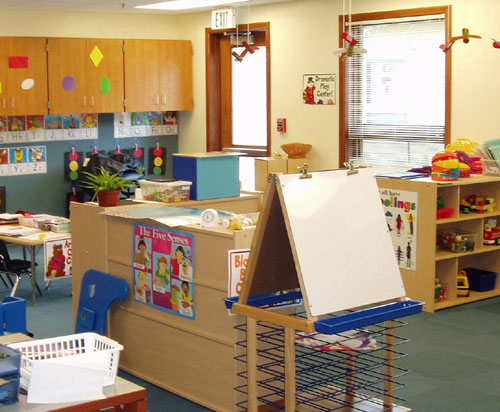
Vol. VII, No. 6, July/August/September 2008
- Make Lasting Summer Memories
- Naturalized Outdoor Classroom Maintenance Isn't Difficult
- Toxic Toys Could Become Dinosaurs
- Education Director Is Quoted in England
- White Hutchinson Has New Mascot
- Is Your Outdoor Classroom Designer/Consultant a Salesperson in Disguise?
- Our Design Team Has a LEED Accredited Professional
- New Resource on Early Childhood Environments Are Available
- Nature in Play Takes Gardening to a New Level
- Institute on Creating Sustainable Environments Adds Tours
- Shade: What Is Your Center Doing to Protect Children?
- Check Out These Resources: Families Connect with Nature
- If the Environment Is the Third Teacher, What Does She Say?
- Recent Projects
Our Design Team Has a LEED Accredited Professional
In just a decade, the Leadership in Energy and Environmental Design's rating system has set the standard for sustainable building design. Choose a LEED accredited professional for your "green" building or renovation project to ensure you're getting expert advice.

Many new or expanding child care, preschool and child development centers are pursuing sustainable building design. For children, "green" indoor environmental quality is a very important criterion for a building's design or renovation. Green buildings also result in considerable cost savings for heating, air conditioning and lighting, and they use less water.
Green buildings can make a significant contribution to improving the earth's health. Today, U.S. buildings:
- Use 12% of all water resources
- Generate 39% of all CO2 emissions
- Create 65% of all waste
- Consume 71% of all electricity
The Leadership in Energy and Environmental Design (LEED) green building rating system, developed by the U.S. Green Building Council, has become the standard by which buildings are certified as green. Since its inception in 1998, LEED has grown to encompass more than 14,000 projects in the U.S. and 30 countries.
To obtain LEED certification, at least one member of a design team must be a LEED Accredited Professional (AP). LEED Accredited Professionals must pass a test to demonstrate their knowledge of LEED standards and the accreditation process. LEED APs lead the building design team through the integrated process needed for a sustainable building, and they handle all documentation and submissions required for LEED construction accreditation.
Our White Hutchinson child care design team now has a LEED Accredited Professional architect, Curt Krambeck, LEED AP. We can design green child care buildings and renovations for clients who can obtain LEED building certification.
Different versions of the LEED rating system are available for different project types, including new construction, interior build-outs and schools. The scoring systems for different LEED versions vary, but all are based on a set of prerequisites and a variety of "credits" in the six major categories:
- Sustainable sites
- Water efficiency
- Energy and atmosphere
- Materials and resources
- Indoor environmental quality
- Innovation and design process.
In LEED v2.2 for new construction and major renovations for commercial buildings, there are 69 possible points, and buildings can qualify for four levels of certification:
Certified, 26-32 points
Silver, 33-38 points
Gold, 39-51 points
Platinum, 52-69 points
Vol. VII, No. 6, July/August/September 2008
- Make Lasting Summer Memories
- Naturalized Outdoor Classroom Maintenance Isn't Difficult
- Toxic Toys Could Become Dinosaurs
- Education Director Is Quoted in England
- White Hutchinson Has New Mascot
- Is Your Outdoor Classroom Designer/Consultant a Salesperson in Disguise?
- Our Design Team Has a LEED Accredited Professional
- New Resource on Early Childhood Environments Are Available
- Nature in Play Takes Gardening to a New Level
- Institute on Creating Sustainable Environments Adds Tours
- Shade: What Is Your Center Doing to Protect Children?
- Check Out These Resources: Families Connect with Nature
- If the Environment Is the Third Teacher, What Does She Say?
- Recent Projects

